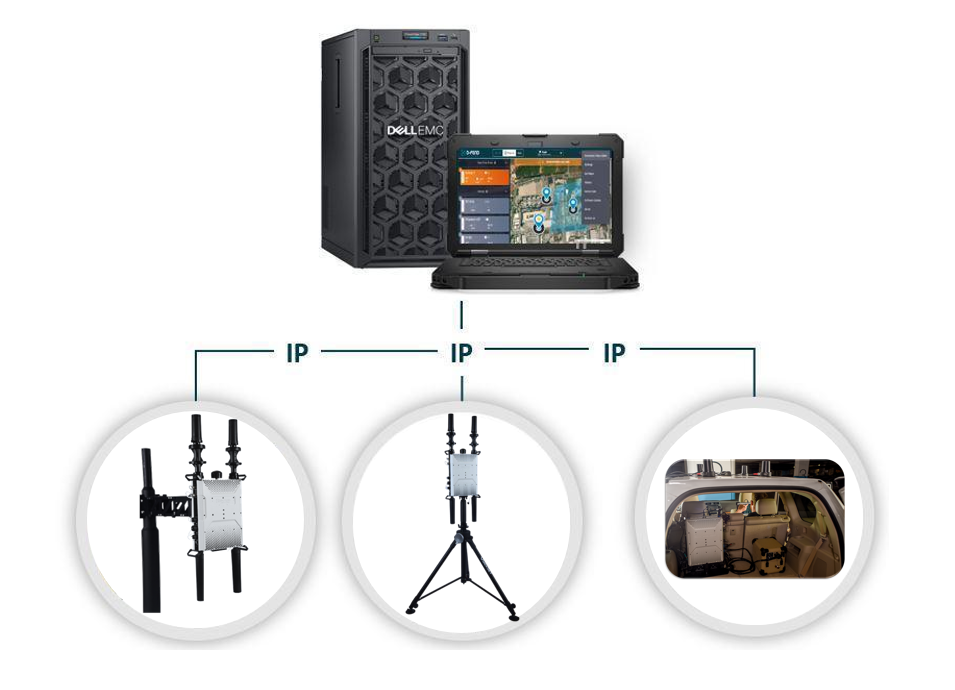By: Dawn Zoldi
Defending vast territories from evolving drone threats presents a formidable challenge for security organizations worldwide. As the proliferation of rogue drones accelerates, safeguarding airports, borders, infrastructure and open-air events requires far more than simply multiplying counter-UAS (c-UAS) sensor nodes across the landscape. The real key to success lies in creating a unified, intelligent system that merges detection and response capabilities into a coherent, operational whole.
The Large-Area Coverage Challenge
Modern counter-UAS operations face tough obstacles when tasked with protecting large facilities, events or border areas. As coverage expands, more sensors must be deployed to monitor for threats, and each additional sensor brings heightened complexity in terms of setup, maintenance and integrating data streams for actionable intelligence. Sensor nodes operating independently may only provide partial visibility, which can leave gaps that can be exploited by hostile drone actors.
In these situations, security teams risk receiving redundant alerts as drones move between sensor fields. This can potentially overwhelm operators and slow response times. Add to this, the fact that environmental and terrain factors such as buildings, trees, adverse weather and RF interference can degrade sensor performance. These factors can further complicate detection and increase the likelihood of missed or misidentified threats. Achieving high-confidence, coordinated detection and mitigation across a vast perimeter is ultimately limited by how well these sensors communicate and work together as a cohesive system.
Why C2 and Multi-Sensor Fusion Are Game-Changers
Just as Command and Control (C2) is the nerve center of any drone operation, so too it is for advanced c-UAS architectures. C2 solutions for c-UAS must:
- Network a range of same or different technology detection sensors and mitigation tools
- Aggregate sensor feeds into a common operating picture (COP)
- Eliminate duplicate detections to present only actionable, context-rich alerts
- Coordinate responses so the most effective mitigation asset is activated without confusion or delay
For multi-sensor environments, the sophistication of C2 software determines whether a c-UAS enterprise delivers true area protection or becomes a patchwork of isolated, and potentially counter-productive “islands” of coverage.
To address these needs, advanced C2 systems and multi-sensor platforms have become indispensable. Multi-sensor fusion software serves as the strategic nerve center. By networking a constellation of disparate sensors and mitigation tools, it delivers a real-time “single pane of glass” for situational awareness. This type of software actively fuses sensor inputs, eliminates duplicate tracks and selects optimal nodes for mitigation. In short, it empowers operators to coordinate effective countermeasures, even on the fly (pun intended). D-Fend Solutions’ Multi-Sensor Command & Control (MSC2) exemplifies this new paradigm.
Multi-Sensor Command & Control: Enhancing Detection and Response
Designed for scalability and seamless integration, MSC2 centrally manages multiple EnforceAir RF-Cyber sensors. It aggregates their data streams into a unified, actionable picture of the airspace. Whether a site employs stationary towers, mobile vehicles or tactical field deployments, all sensor outputs feed into a central map with no additional operators required and no dilution of response speed.

Automation is central to MSC2’s value proposition. When multiple sensors detect a rogue drone, the system merges those contacts into a single track. This eliminates redundant tasks and ensures threat clarity. It selects the best-positioned sensor to initiate mitigation by leveraging real-time analytics on multiple factors such as signal strength, interference and proximity. Should multiple drone incursions occur simultaneously, MSC2 smartly distributes resources and automates the response to ensure every alarm receives immediate and proportional action.
MSC2’s intuitive interface minimizes training time by giving operators the same look-and-feel, whether they have to manage one or several sensors. The system also integrates easily with third-party C2 networks used by law enforcement and defense entities to expand the operational picture across organizational boundaries. Its flexible architecture supports both permanent and rapidly-deployed installations, all linked by secure IP connectivity for robust and resilient performance.
A New Benchmark for Airspace Security
As drone capabilities grow and hostile incursions become more sophisticated, the old model of isolated sensor deployments has simply become insufficient. The future of wide-area c-UAS must be centralized, data-driven and team-focused. Every detection must be instantly contextualized. Every mitigation must be precisely coordinated. MSC2 and security solutions like it are reclaiming the airspace by knitting together fragmented perimeters into true, resilient shields. The smart fusion of detection, command and response ensures that even the largest sites can transition from vulnerable targets to protected assets, no matter how vast the territory or how dynamic the threat landscape.

